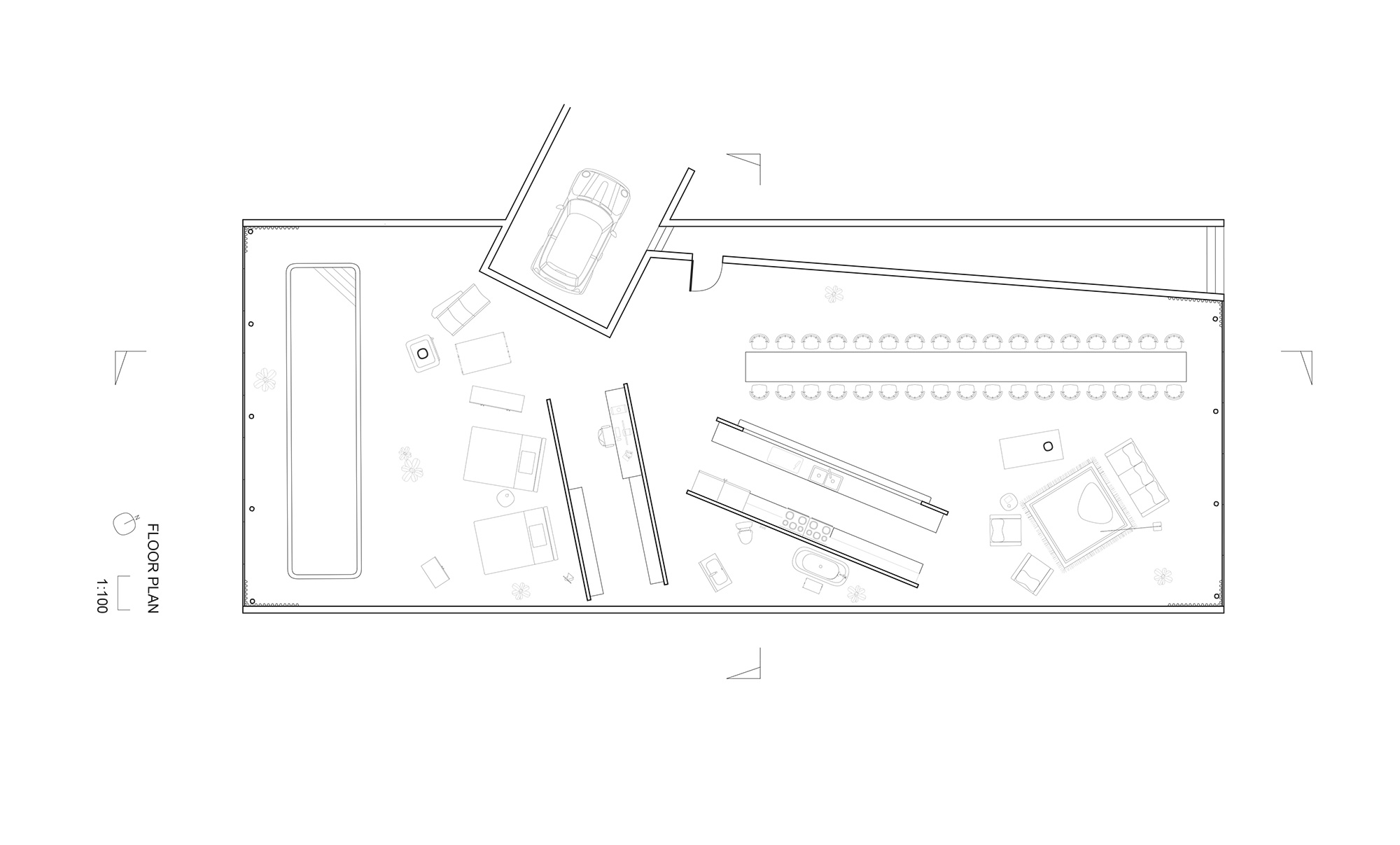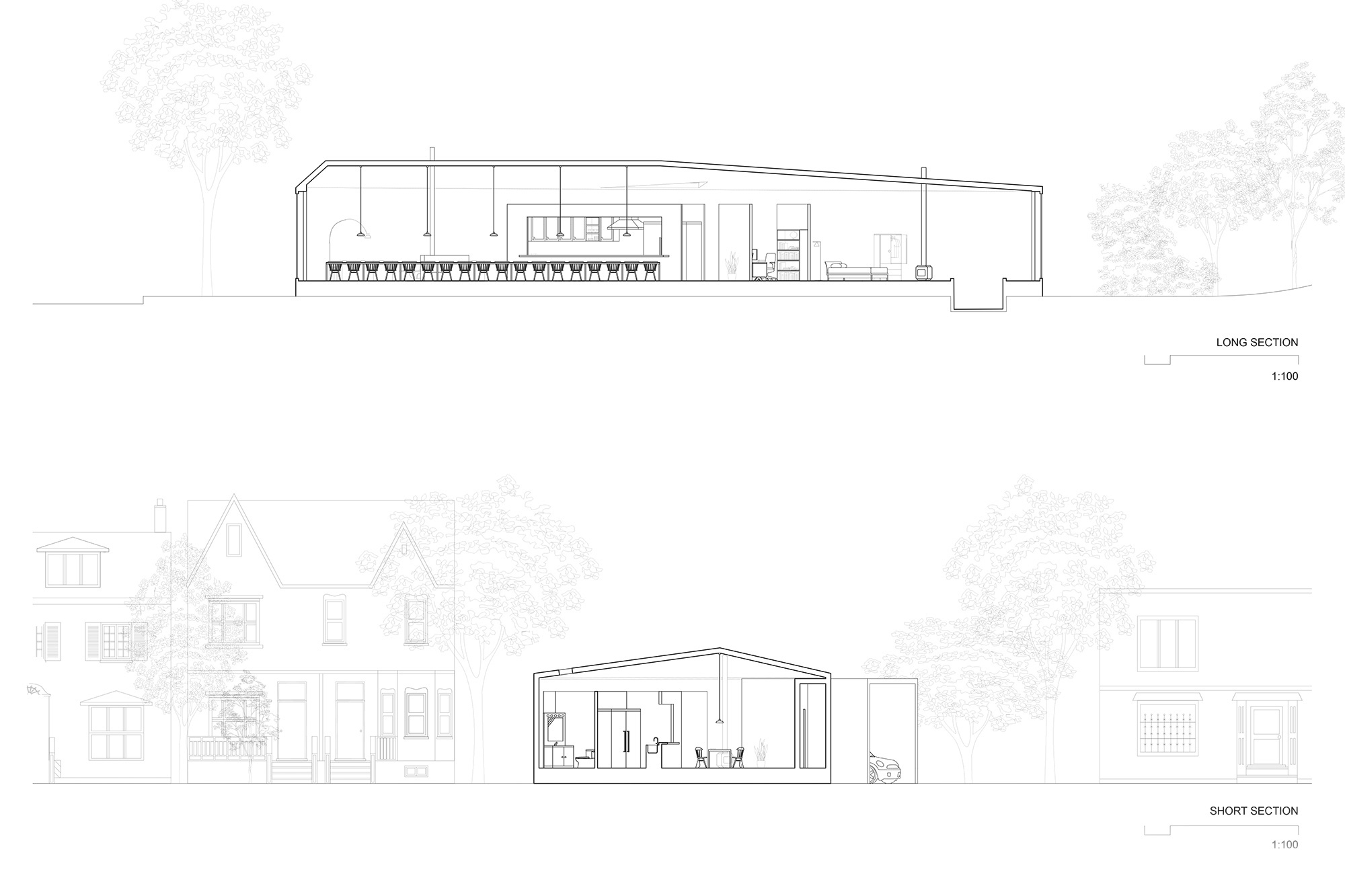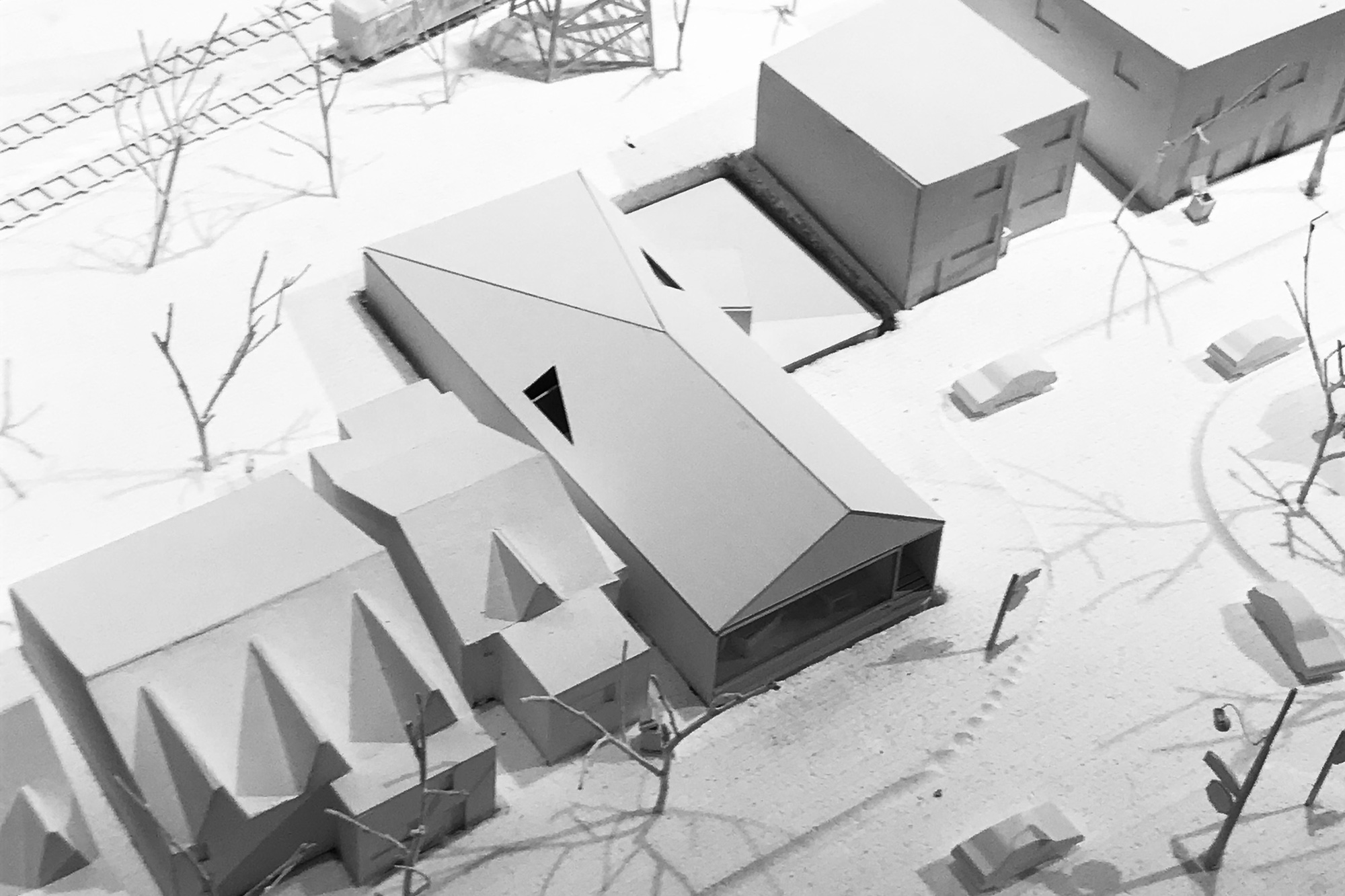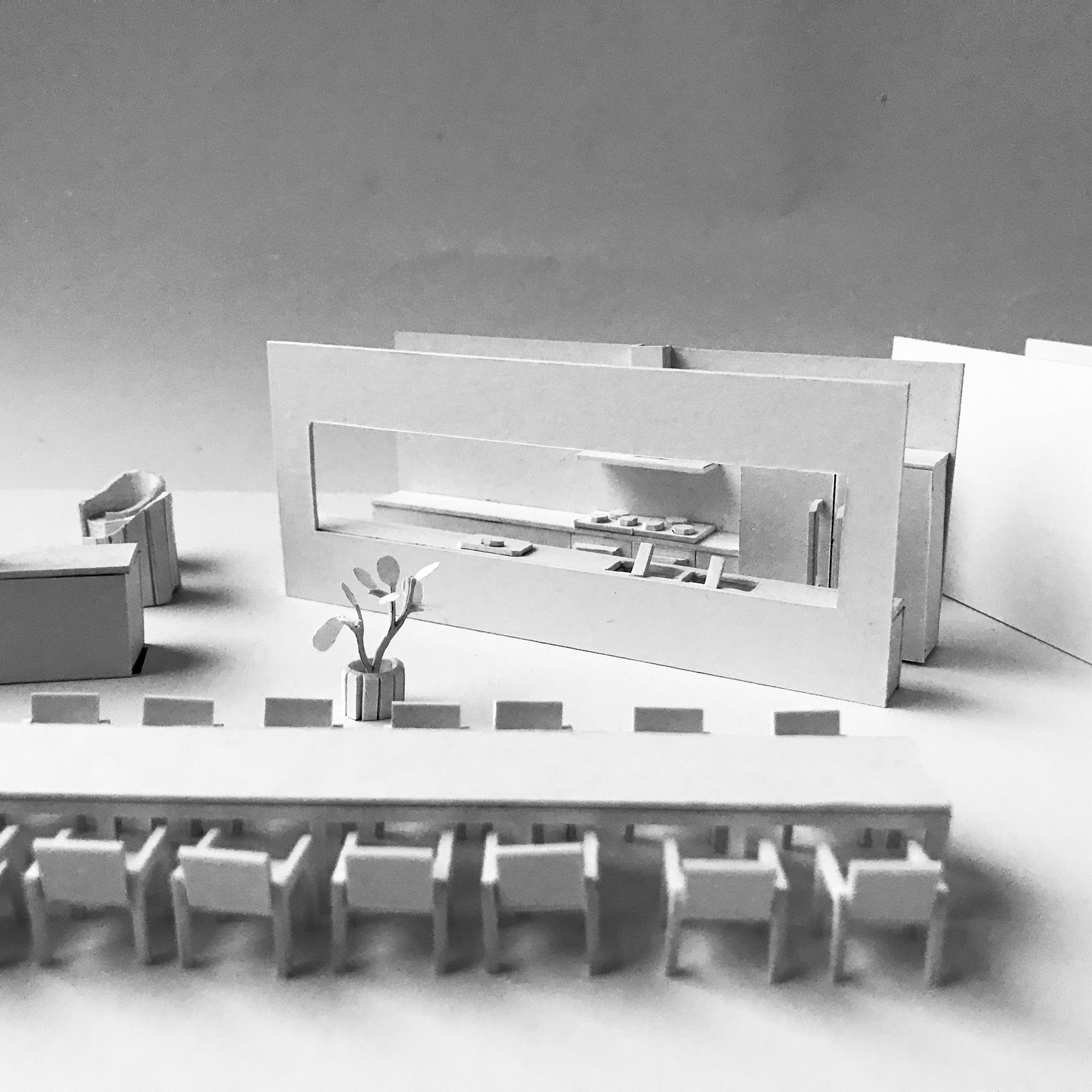
Yuki Creighton, "House of Objects"
Tasked for the first time in his academic career with designing an entire home from the ground up, Yuki had to cope with a challenging set of preconditions. He had been assigned a precedent to study: Gunnar Asplund's Villa Snellman, an early-20th-century Swedish home with an unusual, off-kilter design. Although Villa Snellman has a traditional outward appearance, its L-shaped floor plan is set at slightly less than a perfect 90-degree angle. As a result, the home's interior is subtly askew.
Yuki was also given a pair of imaginary "clients": a busy scientist who needed an in-home lap pool for exercise, and a professional chef who required a dining table with seating for 36. "I had to fit these two abnormally big rectangles within a house," Yuki says.
All of this would need to be designed to be buildable on a modestly sized lot in the Toronto neighbourhood of Rathnelly, an upper-middle-class enclave near Avenue Road and Dupont Street.

"To me, it didn't make sense to start off with designing walls and apply the furniture afterwards," Yuki says. "It made more sense to allow the furniture to define the space by itself." His design takes inspiration from the unusual angles in Villa Snellman, but does away with the notion of interior walls. All of Yuki's living spaces are denoted by objects — tables, chairs, and counters — set at strategic angles in order to create the illusion of separate public and private spaces.
The house has only one storey, with a single entrance that opens directly into the middle of the floor plan. "I wanted people to enter in the heart of the house," Yuki says. "In order to ease that experience I put the entrance at the end of a long outdoor corridor space, to create a buffer."


The house's public spaces — meaning the kitchen, the living area, and the dining area — occupy slightly more than half of the floor area. The peak of the roof aligns with the extra-long dining table, emphasizing the centrality of group dining in the lives of the occupants.
In order to separate those public spaces from the more private areas at the back of the house — the bedroom, the bathroom, and the lap pool — Yuki created a narrow funnel using the walls of the home's garage and the bathroom's privacy screen. The pinch point creates a sense of intimacy by mimicking a doorway, while also obstructing visitors' views into the owners' private retreat.
Instructor: Adrian Phiffer

